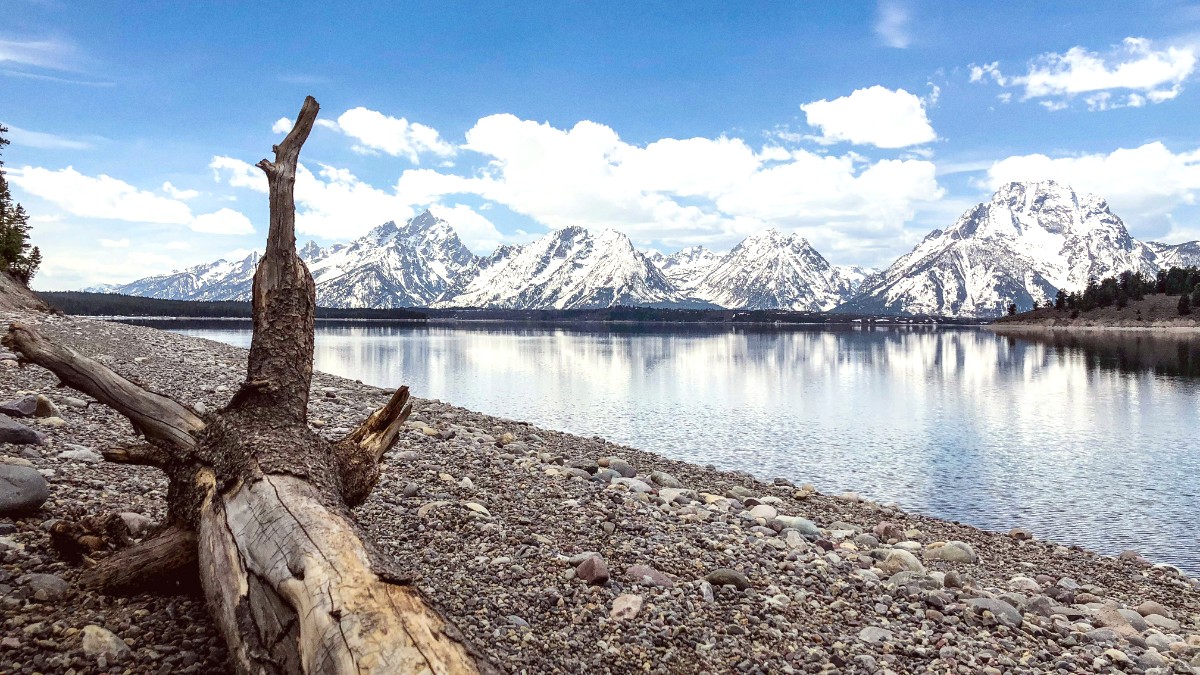
Wyoming, USA
Jackson Hole invites you to experience nature at its grandest, presenting a memorable journey for every traveler. Discover stunning vistas, thrilling activities, and a welcoming community ready to share its unique slice of Wyoming.
Jackson Hole acts as a gateway to Grand Teton National Park and the southern reaches of Yellowstone National Park. The valley itself provides a diverse range of activities throughout the year.
Prepare for an experience where rugged adventure meets modern comfort, shaping a singular travel experience for all who visit.
Jackson Hole stretches as a valley approximately 40 miles long and 15 miles wide, nestled in the northwest corner of Wyoming. The formidable Teton Range borders the valley to the west, defining its western edge with iconic, dramatic peaks that rise sharply from the valley floor. These mountains, lacking foothills, create a striking geological profile. To the east, the Gros Ventre Range forms a different mountainous backdrop.
The Snake River meanders through the length of the valley, a corridor for wildlife and recreation. This river, originating in Yellowstone National Park to the north, flows south, shaping the valley's landscape and supporting its diverse ecosystems. Much of Jackson Hole falls within the protected boundaries of Grand Teton National Park and the National Elk Refuge, preserving its wild character and abundant animal populations.
Main commercial and cultural hub at the southern end of the valley.
Located 12 miles northwest of Jackson, at the base of Jackson Hole Mountain Resort.
Covers a significant portion of the valley, featuring dramatic mountains and lakes.
A important winter range for elk, near the town of Jackson.
Valley floor averages around 6,237 feet (1,901 meters), contributing to its high-alpine climate.
This geographical layout ensures that while visitors enjoy comforts and services, they remain closely connected to the expansive wilderness that defines the area.
The Teton Range creates an iconic and dramatic skyline, rising sharply from the valley floor.
The Gros Ventre Range forms a different mountainous backdrop, completing the valley's natural boundaries.
The region's unique geology and hydrology shape a habitat for diverse flora and fauna, making it a prime location for nature observation.
Millions of years of geological forces, mainly faulting and glaciation, sculpted the dramatic Teton Range and the valley floor. These processes formed the landscape we admire today, shaping the river systems and lakes.
Long before European explorers arrived, various Native American tribes, including the Shoshone, Crow, Blackfeet, Gros Ventre, and Nez Perce, used Jackson Hole. They traveled through the valley for hunting, gathering, and spiritual purposes, following seasonal migration patterns of wildlife. Evidence of their presence, like ancient campsites and tools, dots the landscape.
The early 19th century brought fur trappers, known as mountain men, to the valley, seeking beaver pelts.
Homesteaders followed, establishing farms and ranches despite the challenging climate and remote location.
The 20th century saw a significant shift towards conservation, leading to Grand Teton National Park's establishment.
The creation of the National Elk Refuge in 1912 addressed the dire situation of the elk herds, giving them a protected winter range. These conservation milestones shaped Jackson Hole into the destination it is today.